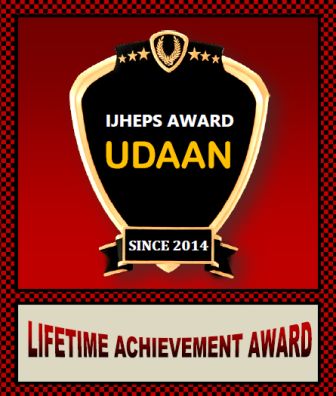
e-ISSN 2320-2955, p-ISSN 2249-2569, ISBN 978-81-909047-9-7
INTERNATIONAL RESEARCH JOURNAL OF HUMANITIES,
ENGINEERING & PHARMACEUTICAL SCIENCES
(An International Registered Research Journal) - Now IJHEPS Recommended By International Committee of Medical Journal Editors, USA
- Now IJHEPS Recommended By International Committee of Medical Journal Editors, USA
| PHARMACY | |
|---|---|
| Title | COMPARATIVE ASSESSMENT OF ANTIBIOTIC SENSITIVITY PROFILES OF BIOFILM-PRODUCING BACTERIAL ISOLATES FROM CLINICAL AND WATER SAMPLES IN ABAKALIKI, EBONYI STATE, NIGERIA |
| Authors | Iroha I. Romanus., Ekuma O., Udida J., Moses I. Benjamin., Ejikeugwu P. Chika., |
| Page No | 1-6 |
| Code | Int./JAN16/PH1120 |
| Affiliation | Ebonyi State University, Nigeria |
| Abstract | The objective of this study was to compare the antibiotic sensitivity patterns of biofilm-producing Klebsiella pneumoniae isolated from clinical samples (wound and catheter urine) of hospitalized patients with biofilm-producing Pseudomonas aeruginosa and Klebsiella pneumoniae isolated from drinking water sources (tap and borehole). A total of 50 clinical samples (catheter urine = 30; wound = 20) and fifty water samples (taps = 11; boreholes = 39) were collected. The bacterial isolates were characterized and identified using standard microbiology methods. Antibiotic sensitivity test was carried out using Kirby – Bauer disk diffusion technique and the results were interpreted according to the CSLI standards. Screening for biofilm-producing potentials was done by tube method. A total of 44 Pseudomonas aeruginosa and 6 Klebsiella pneumoniae were isolated from water samples while 24 Klebsiella pneumoniae isolates were obtained from clinical samples of hospitalized patients. Results also showed that none of the clinical samples (catheter urine and wound) was positive for P. aeruginosa. Out of the isolates obtained from water samples, 37 Pseudomonas aeruginosa and all the 6 Klebsiella pneumoniae isolates were positive for biofilm production while all the 24 Klebsiella pneumoniae isolates from clinical samples were positive for biofilm production. Results showed that the P. aeruginosa isolates obtained from taps and boreholes were highly resistant to imipenem (100 %), tetracycline (100 %), cotrimoxazole (100 %), followed by cefoxitin (97.7 %), amoxicillin-clavulanic acid (95.4 %), meropenem (86 %), ofloxacin (86 %), aztreonam (79.1 %), ampicillin (76.7 %) ciprofloxacin (69.8 %) and chloramphenicol (65.1 %). P. aeruginosa showed low level of susceptibility to aztreonam (20.9 %), ampicillin (23.3 %), ciprofloxacin (30.2 %) and chloramphenicol (34.9 %). This study revealed that all the K. pneumoniae isolates obtained from water samples were completely resistant (100 %) to imipenem, tetracycline, cotrimoxazole, cefoxitin, amoxicillin-clavulanic acid, meropenem, aztreonam, ampicillin, ciprofloxacin and chloramphenicol except ofloxacin in which 2.3 % susceptibility frequency was observed. This study also showed that Klebsiella pneumoniae isolates from catheter urine and wound were susceptible to imipenem (100 %), gentamycin (50 %) but resistant to ceftriaxone (91.7 %), cefotaxime (100 %), sulfamethoxazole (100 %), tazobactam (100 %), tobramycin (100 %) and ceftazidime (100 %). This study shows that chloramphenicol and ciprofloxacin are still effective against biofilm-producing P. aeruginosa while ofloxacin had little activity against K. pneumoniae isolated from water samples. All the K. pneumoniae isolates obtained from water samples were completely resistant to imipenem but surprisingly, all the K. pneumoniae isolates obtained from clinical samples were susceptible to imipenem. K. pneumoniae isolates from clinical samples also recorded some level of susceptibility to gentamycin. This study, therefore, shows that antibiotic resistance is more prevalent in biofilm-producing bacterial isolates obtained from water samples (taps and boreholes) than those from clinical samples (catheter urine and wound). |
| Paper | Download |









